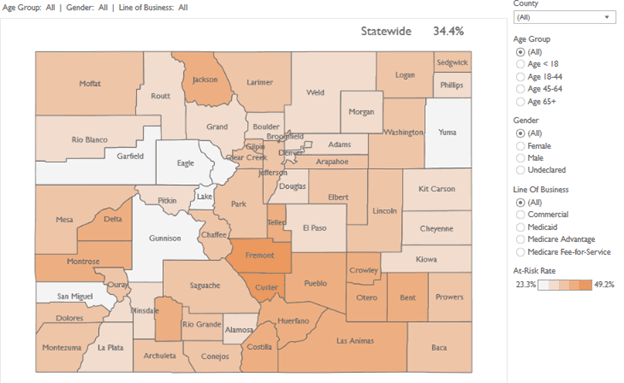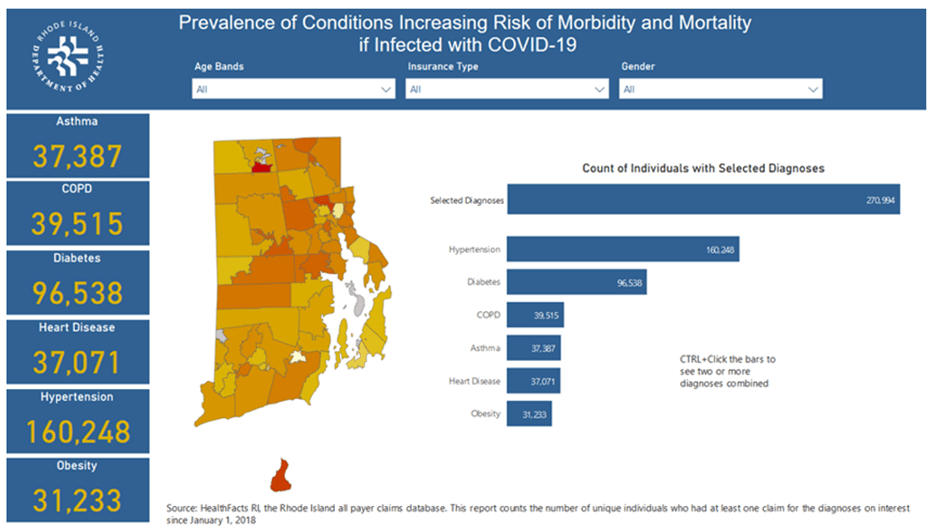Health Claims Data Helps States Pinpoint Citizens at Risk for COVID
Using the APCD, Colorado authorities can plan vaccine distribution, states can identify potential future hot spots, and more.
Colorado’s Center for Improving in Health Care (CIVHC) has released a groundbreaking analysis that uses the state’s all-payer claims database (APCD) to identify those at highest risk should they contract COVID-19. CIVHC analysts used CDC risk criteria, including patient’s age, presence of chronic health conditions, and living in a nursing or long-term care facility.
Kristin Paulson, JD, MPH, Chief Operating Officer at CIVHC said “This new interactive dashboard allows detailed examination of where and how many at-risk Coloradans there are. Public health authorities can use this information to plan vaccine distribution logistics, to help ensure enough vaccine gets to the highest priority citizens around the state.”
CIVHC provides an excellent data display, designed in Tableau™ and live on CIVHC’s website.

Users can easily filter the results by key demographics and geography.
A previous blog post here described how Rhode Island has also harnessed its health claims data to identify high-risk populations, thanks to the RI APCD.

Over the frenetic months of this pandemic, APCDs have repeatedly proved their value for protecting the public health. Whether tracking how COVID has depressed the use of needed medical services, such as the abrupt declines in preventive services and acute care for life-threatening conditions, identifying citizens at greatest risk, or helping to plan for vaccine prioritization and distribution, analysts have discovered new ways to apply APCDs to the urgent needs at hand. And as we begin to emerge from this devastating crisis, APCDs will be crucial data for understanding prevention, spread, and treatment during the pandemic, to enable us to be far better prepared for the next, inevitable, epidemic.
